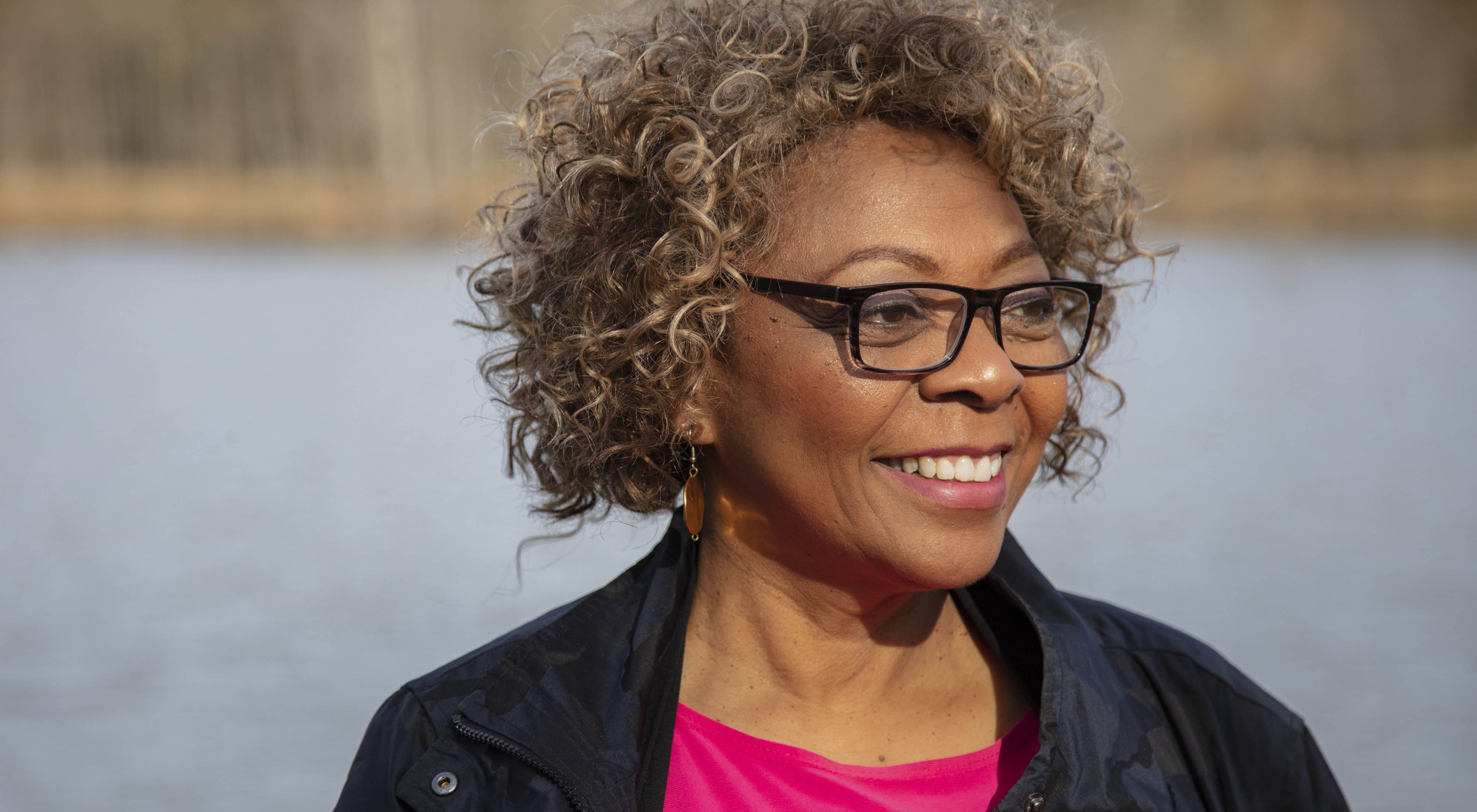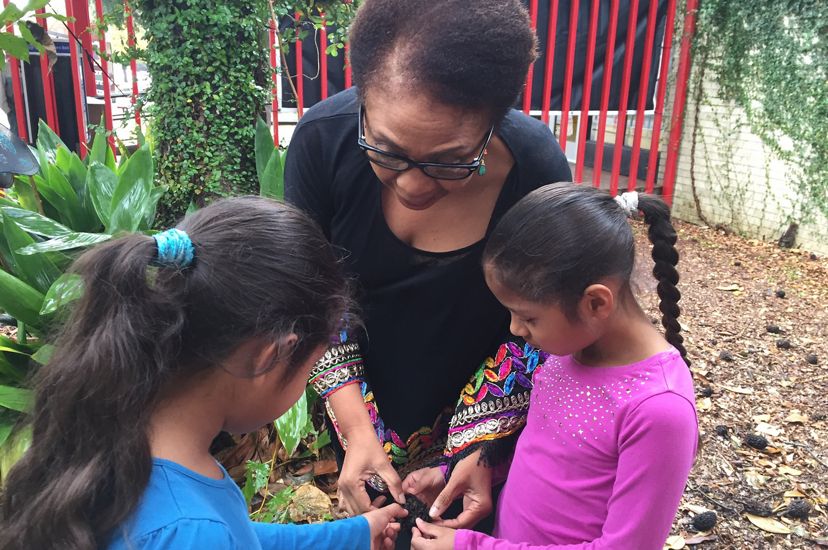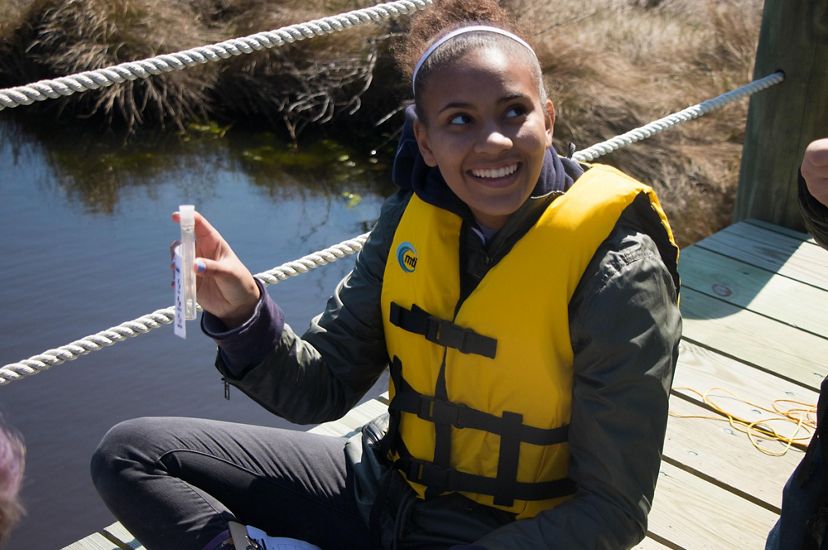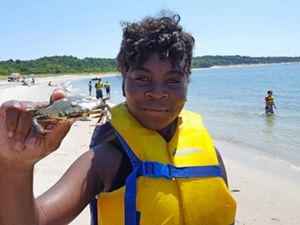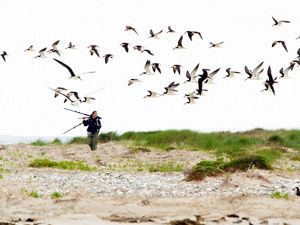Conservation and Race: A Conversation with Dr. Mamie Parker
The TNC Virginia trustee and U.S. Fish and Wildlife Service veteran talks about conservation, environmental justice and racial equity.
Fall 2020
The first African-American woman to be the head of Fisheries and a regional office at the U.S. Fish and Wildlife Service, Dr. Mamie Parker retired from a successful federal career and now works as a coach to nonprofit and government leaders. She serves on the boards of several conservation organizations—including that of The Nature Conservancy of Virginia. Nature Conservancy magazine spoke with her in June 2020 about the intertwined issues of conservation, environmental justice, and forging partnerships with communities of color.
Nature Conservancy: The Black Lives Matter movement exploded across the media and into the streets in the United States after the murder of George Floyd on May 25 in Minneapolis. You and I are talking just a month or so later, and racial injustice is still dominating the news and people’s dinner-table conversations. May I ask how you begin conversations about race, especially with colleagues in a white-dominated field like conservation?
Parker: You know, starting the conversation is always tough. It usually starts out by telling them that race does matter, who my people are and how they had to overcome racism. My people are from the rural segregated South, from one of the poorest regions in this country: the Mississippi Delta. My great, great grandmother, Ann, was a slave who came to Virginia from Africa. She lived 30 years as a slave and 30-some years as a free person. Eventually, her descendants ended up in Arkansas, where they didn’t have any of the rights and privileges of Americans, but survived and thrived in many cases.
Three to four weeks before my birth, President Eisenhower sent troops into Arkansas to escort those girls and boys into the segregated Central High School in Little Rock. My mother was really glad that the President stood up to racism. Born on Eisenhower’s birthday, I was given the name of the First Lady: Mamie. What is ironic is the fact that President Eisenhower, George Floyd and I share the same birthday of October 14.
So, after we start a conversation, the next thing to do is to ask my colleagues in conservation to acknowledge systemic racism and white privilege, then find the little things that they can do to make it better. They might not be as powerful as President Eisenhower or as influential as George Floyd’s death, but they can make a difference in someone’s life.
You’ve shared that your mother was the person who turned you into a nature lover.
My mother only had an eighth-grade education, but she was very smart, an avid angler and a great gardener. [When I was born] she had already had five boys and five girls. As the last child, I got a lot of time with her and many life lessons on the banks of the Bayou Bartholomew and Lake Enterprise in southern Arkansas. That's where I started appreciating the outdoors, in what is now the Overflow National Wildlife Refuge.
What was your experience of race relations growing up?
It was not always easy. I integrated my third grade class in the mid 1960’s and there was not a lot of socializing between Blacks and whites. To integrate the schools was a big deal. They had to choose certain children that they thought had resilience and that would survive in that environment. My mother’s first choice to send was my sister, but later decided that I could talk my way out of anything.
Quote: Dr. Mamie Parker
Pioneers are very lonesome people, and so I had some lonesome, lonesome moments.
Was it OK for you?
Pioneers are very lonesome people, and so I had some lonesome, lonesome moments of being pretty much ignored [at school]. I just wanted out. You can imagine a third grader having no friends at school. But then I had this one girl that changed that experience for me. She had a lot of courage. She thought I was crying one day—I was only sniffing, but she thought I was crying—and she brought me a piece of gum. She said, “Here take this. It always makes me feel better.”
Did that change things at school for you?
She became that ally and bystander that intervened on my behalf. And I really believe as we look at what we're hearing about now in the news—in terms of white supremacy, white privileges and things that happen—it is those bystanders that need to intervene. Then, they should bring others with them, which is exactly what one of my fellow classmates did. She said, “I know the rest of [the kids] aren't playing with you, but I bet this one girl would play with you because she is like me. And so will this other girl … " She grabbed two white friends and others followed them. So as the days went on, I was no longer excluded. I'm never saying it was easy. But they stood up for me when the kids talked about me or called me the “N” word or whatever. I had interveners that were there. They had the courage to acknowledge racism and say, "I can imagine that felt bad.”
What did your mother say?
I'll tell you, my mother believed so much in this movement that she was willing to sacrifice her daughter for what she believed needed to happen in this community. But what she would tell me most was about our family pride. How I represented the family and how we shouldn't be quitters. She had a quote she liked to say: “We can do what can't be did.” Her English wasn’t perfect but I got the message.
I have to say, I feel a lot of empathy for both sides of that conversation.
Right. It was hard. So, I learned the importance of not quitting. That's a big burden on pioneers, to have to carry the weight of a whole population on their shoulders.

Let’s talk about how you ended up in conservation.
My science teacher was the one that talked about environmental challenges in this country. What really got to me was when he talked about the mercury in the fish. I asked more questions, because my family ate a lot of fish. And I started reading up on it and found out about pesticides, about DDT. I was inspired by him saying “What can you do about this?” And that kind of started me to think about the environment differently. I never saw a Black person that actually did something like become an environmentalist or become a conservationist. Still, I was encouraged to be a scientist because of my grades. In college, I studied biology and eventually found conservation role models and started some internships in the Fish and Wildlife Service, and my career started shortly after that.
The Fish and Wildlife Service took you from Arkansas to Wisconsin.
I worked all over the country. From Wisconsin, I went to Missouri. I left Missouri and went to Minnesota and left Minnesota and moved to Georgia. And then I moved to work in the Service Director’s office. When I doubted my abilities, former Service Director Jamie Clark had to convince me that I was good enough to become that great leader. Several years later, the Service made history when I was appointed to serve as a regional director— the first African-American to do so.
So after a successful career at Fish and Wildlife, you retired and now work as a success coach to nonprofit leaders. How did you come to join The Nature Conservancy’s Virginia Chapter board?
Prior to retiring, I had met TNC’s Virginia state director, Michael Lipford, and the deputy state director, Bill Kittrell. [After I retired] I ran into Michael at a function that TNC’s chief external affairs officer, Lynn Scarlett, invited us to attend.
Several months later, Michael called and said, "We would like for you to consider joining our board." And I—right away, as I recall—I said, "No, because I'm not a man with lots of money." That was my image of TNC trustees. I told him, "I just don't see where there would be a role for me ... I mean, I'm a retired Black federal employee. I don't know what I could do." But Michael was really thinking big. He said, "Some of us can give financial resources. Some can give their access to the right people. And some can give their time." All three of those are important.
Once you joined TNC’s Virginia board, you became a passionate advocate for the Virginia Coast Reserve, a string of 14 barrier islands that run along more than a third of the state’s coastline.
That became like my baby, partly because of Dr. Jill Bieri, who directs work at the reserve, and the population of African-Americans in that area and what they're all about. From the 1950s to 1970s, there were proposals to turn that area into a bombing range or a resort. TNC started fighting it and saying, no, this is not what we need right here, we need to save this land. To save it, [TNC realized it] needed to get support from the local community, including the Black community. Today, they do that through the children: Many elementary school children in that area come to the reserve to learn about it. And we hope in years to come that these individuals will be the ones that are protecting this land because they've gotten connected to it.
Quote: Dr. Mamie Parker
You have to ask yourself every day, "What good have I done this day?" Those are Ben Franklin's words. What good have I done this day to bring people of color into the movement?
Other chapters at TNC have asked you to come speak to their boards, right? What do you talk to your fellow trustees about?
The first presentation was to TNC’s Illinois board, thanks to former State Director Michelle Carr, another great visionary. They wanted to hear about my journey in conservation and my life story. Then we discussed various opportunities to increase efforts to reach out to the minority community. It was obvious to me that they wanted to do better. Basically, all TNC chapters must work harder to truly embrace the fact that there is a need to open their eyes to biases and injustice. A lot of it is unconscious. More important, the message to them is all about “Don't quit.” That it might not be easy, but you have got to do the hard work and you have to ask yourself every day, "What good have I done this day?" Those are Ben Franklin's words. What good have I done this day to bring people of color into the movement? They need to be bold thinkers and bridge builders to the communities of color.
So the elephant in the room is that conservation groups, including TNC, historically have a poor track record when it comes to working respectfully with communities of color. Are some of your colleagues bringing a new attitude to this work?
Yes. Many of them have really been responsive since the events associated with Justice June. In my opinion, most of them must continue to be persistent and think about Black people’s qualitative experience in conservation. I think about how birders are—we will go for days, months, years, looking for that one bird so we can check it off the list. My belief is that that's also what we should do, in the conservation community, when it comes to including people of color. We just want to check it off: “We got another one. Got another one.” But we don't always stop and think about their scar tissue, their roots, the emotional trauma that they have endured. We experience isolation, racism, sexism, microaggressions, and exclusion, among other challenges. I know some that are feeling broken and shattered and it saddens me. Can we make their experiences better?
I'm imagining being in that Illinois meeting and hearing you say, "You need to work at this every day." Some people may be thinking, "Wait a minute, I have to talk to communities of color every day?" Do you get any pushback?
I don’t say that they must talk to them every day but think about outreach every day. I've heard objections to this on almost every board that I'm on. Sometimes it’s called mission creep. And to me, that’s a code word—microaggression, there in the words. It can stop the process right away.
What do you say to the mission creep argument?
It's not creep. This is a business decision here. You should see this as proactive thinking and one of the best investments that you can make.
What do you mean when you say this is a business decision?
We need a diverse range of partners, whether it's in the federal system, the state system, and/or in the community. If you look at each one of those communities, they're all turning brown and black. When you look at who's leading Congress right now, many of the important committees on the House side, they're being led by people of color. They're chairing many of the natural resource committees, they're minority leaders on the Senate committees. [Those leaders] represent large blocks of people of color. We need them in the movement.
Quote: Dr. Mamie Parker
I'd go to National Wildlife Refuges and people would ask me if I were lost. I just got callused to it. I think what brought me [to speak up] was that I removed some of the scar tissue.
What has it been like to be the person speaking up for these ideas? Often, you’ve been the only Black person at the table when these discussions happen.
Believe it or not, it is sad to say that I've just found my voice in this in the last five years or so. I tried so hard to be a great scientist first, and a great conservationist, and great leader. Now I'm ready to bring a voice to these issues. Many people ask me, why did it take me so long? They feel like I've been too passive too long.
What changed?
I started paying more attention to the unconscious biases. They became more defined to me. Before, I had callused over the fact that when I walked into a room, people thought I was the secretary or the reporter or that I didn't belong there. I'd go to National Wildlife Refuges and people would ask me if I were lost. I just got callused to it. I think what brought me [to speak up] was that I removed some of the scar tissue. My lens changed. Secondly, I think what brought me there was finally finding hope that something might change, seeing more whites amplify their voices on these issues. People want more diverse people at the table. That helped me amplify my voice.
Speaking of amplifying your voice, you’ve been advising TNC as the state of Virginia is getting ready to permit more solar energy installations. How does race play into this scenario?
Senior Conservation Scientist Judy Dunscomb on TNC’s Virginia staff brought several of us together to think strategically about recommendations on the placing of these installations, in order to be more proactive. She was also thinking proactively in terms of environmental justice. Historically, many bad things done—the highways, the toxic waste sites, transmission corridors, dumping grounds—happened in neighborhoods where people of color are located. The key here is to think carefully about [siting solar installations]. We might think, “Let's put them in brownfields—that seems like a logical place.” Think about where some of the brownfields are. We need to make sure they're not where the people of color are living.
Quote: Dr. Mamie Parker
Collectively, we have to think about nontraditional partners and the value that they add. When we bring people of color and other people to the table, we're talking about our future. We need them.
Another area that environmental justice advocates point to is climate change, which disproportionately hurts communities of color.
Look at the history of the United States and where [communities of color] live. Nationwide, [white people] gave swamp lands to the people of color. And so now, in many instances, that's where we live—in flood-prone communities. So when you talk about sea level rise, when you talk about flooding, that's where climate change is going to have such an impact. But it motivates people of color, too, to get engaged in the [environmental] movement and climate change action.
Do you have any advice for conservation leaders who are looking to make their own organizations more diverse?
Let’s look at this the same way we attack a conservation issue. We bring our passion to it. We treat it as a partnership, and bring in people that are experts and we inspire them to get it done. It's the same formula when we talk about race relations and social justice. If we really want to tackle this problem, we have got to start with that same level of passion.
Where do you think conservation, as a movement, should go from here?
Well, first of all, no one has all the answers. Find innovative ways to use technology to work collaboratively on large-landscape and climate-smart conservation. Meet diverse people where they are. We've got to relearn and unlearn a lot of the things that we've done when we built the conservation movement. We need to continue working individually and collectively. Individually, we need to search our hearts, to welcome discomfort and to give people the benefit of the doubt on both sides. Think about the broken-hearted pioneers and how they might feel. Stand up for individuals that need you right now. Intervene. And then collectively, we have to think about nontraditional partners and the value that they add. When we bring people of color and other people to the table, we're talking about our future. We need them. Community conservation, in my mind, is the conservation of the future.
Get the Magazine
Become a member of The Nature Conservancy and you'll receive the quarterly print magazine
